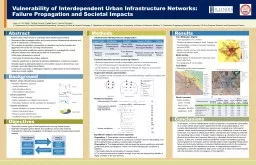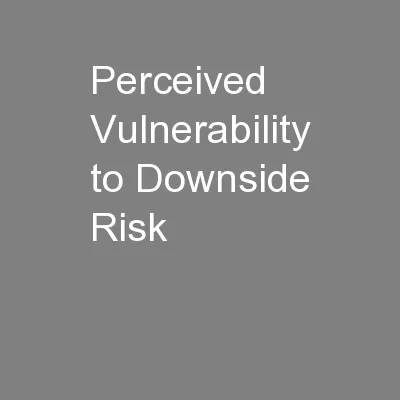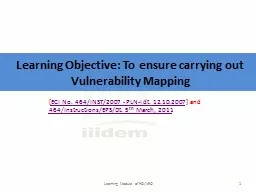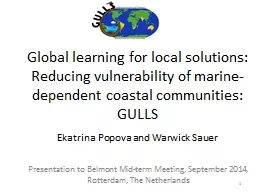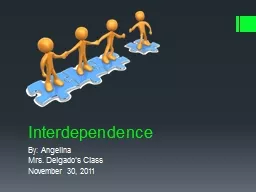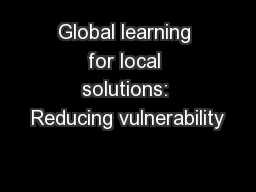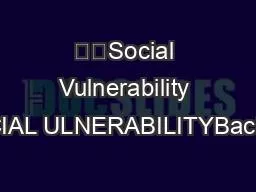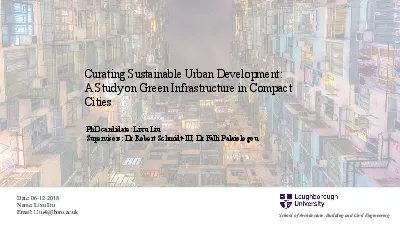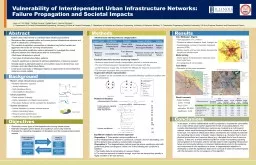PPT-Vulnerability of Interdependent Urban Infrastructure Networ
Author : lois-ondreau | Published Date : 2017-12-17
Failure Propagation and Societal Impacts Liqun Lu 1 Xin Wang 2 Yanfeng Ouyang 1 Natalie Myers 3 Jeanne Roningen 3 George Calfas 3 1 Department of Civil
Presentation Embed Code
Download Presentation
Download Presentation The PPT/PDF document "Vulnerability of Interdependent Urban In..." is the property of its rightful owner. Permission is granted to download and print the materials on this website for personal, non-commercial use only, and to display it on your personal computer provided you do not modify the materials and that you retain all copyright notices contained in the materials. By downloading content from our website, you accept the terms of this agreement.
Vulnerability of Interdependent Urban Infrastructure Networ: Transcript
Download Rules Of Document
"Vulnerability of Interdependent Urban Infrastructure Networ"The content belongs to its owner. You may download and print it for personal use, without modification, and keep all copyright notices. By downloading, you agree to these terms.
Related Documents

